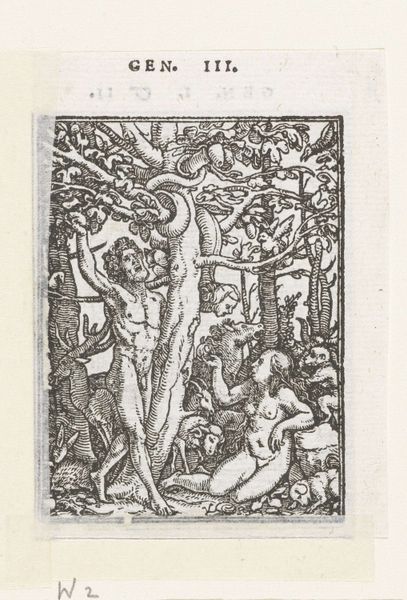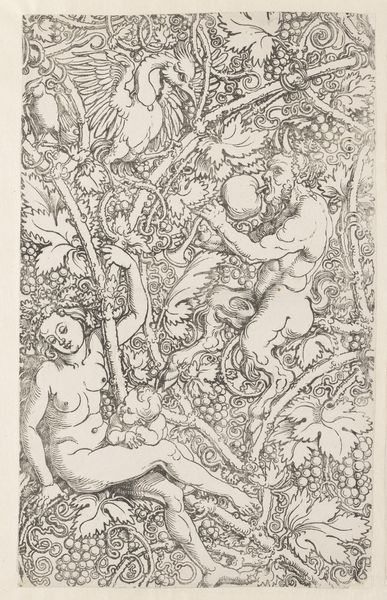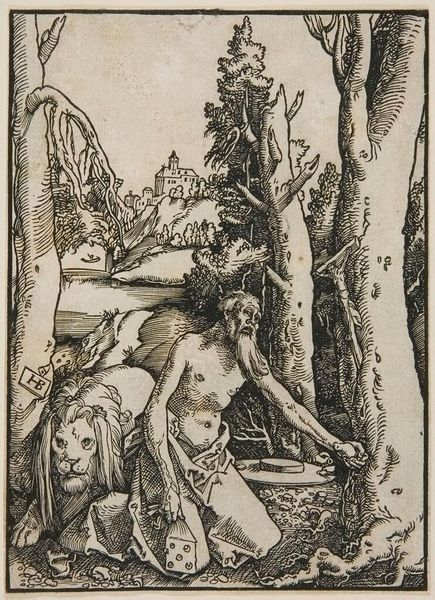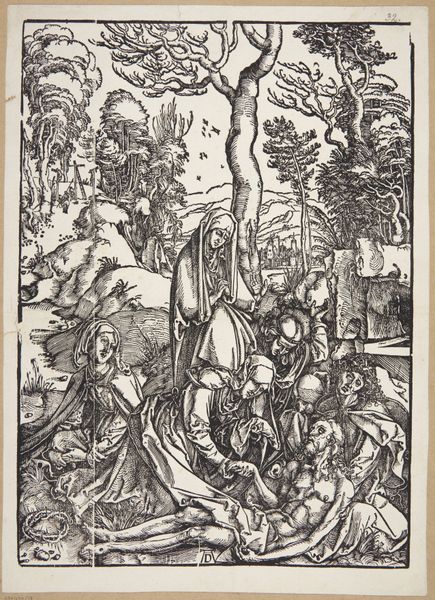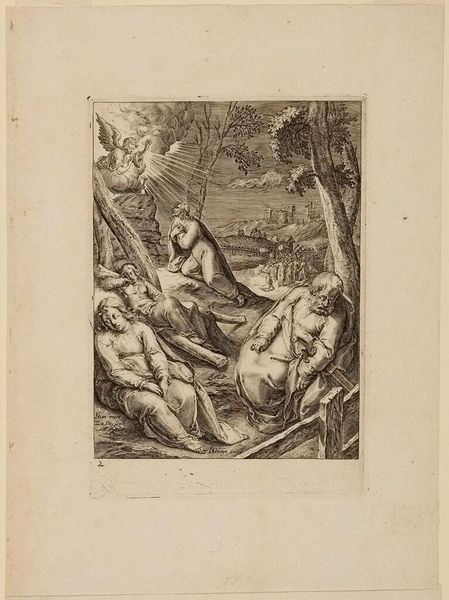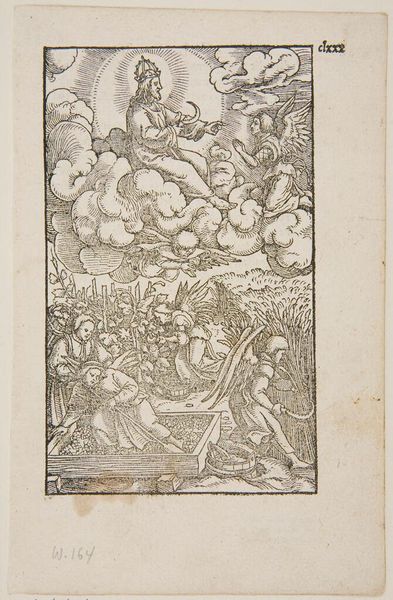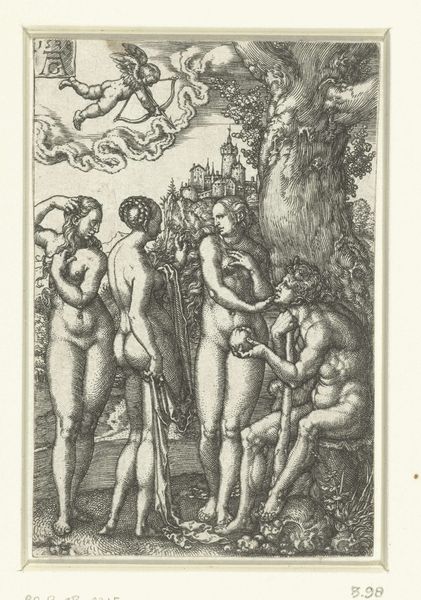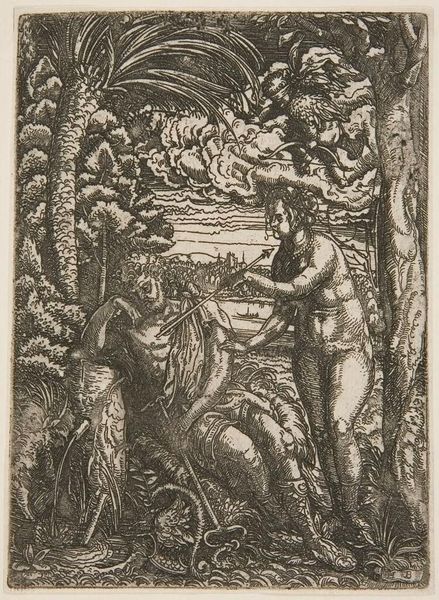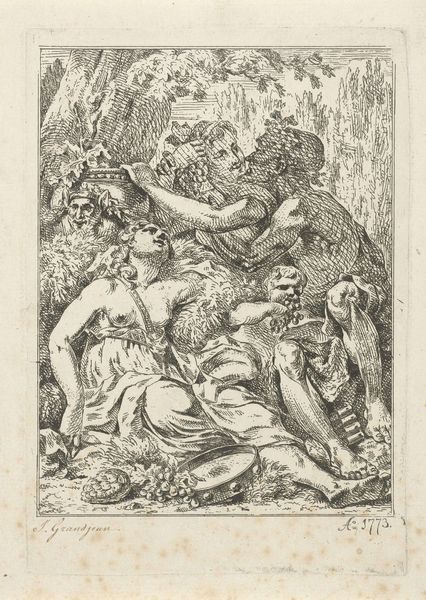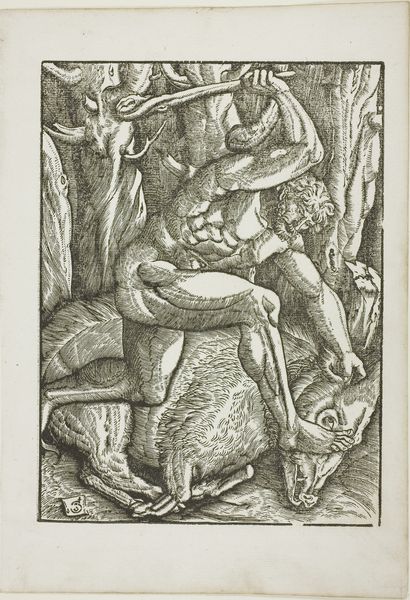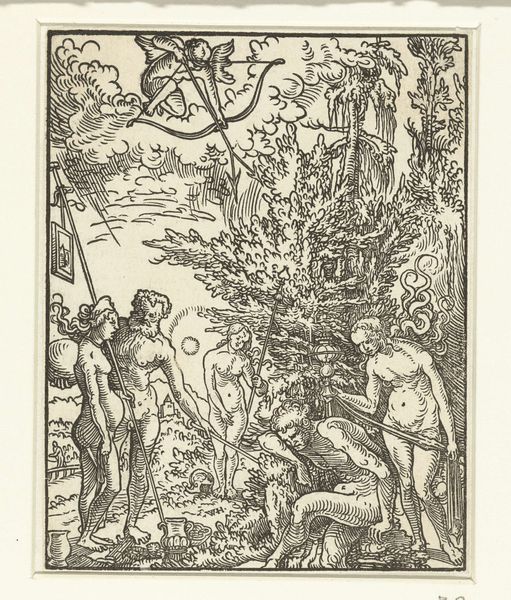
Copyright: Public Domain: Artvee
Editor: Here we have "Fantasy" by Pierre Puvis de Chavannes, dating from sometime between 1824 and 1898, an ink drawing on paper. It looks to be entirely composed of delicate lines. What draws your eye when you look at this piece? Curator: The first thing that strikes me is the deliberate use of a seemingly 'lowly' material, ink, for a subject so overtly elevated—we're talking classical allegory here! Think about the labor involved, the artist repeatedly and patiently layering thin lines to build form, rather than, say, sculpting marble or painting with expensive pigments. Editor: So you're saying the choice of ink challenges traditional ideas of 'high art'? Curator: Precisely. It draws attention to the *making* of the image. The act of drawing, of replicating forms through accessible, mass-produced materials undermines this artwork's status as unique or divinely touched. It’s also crucial to consider the social context: what kinds of fantasy were being consumed and how, given this period’s print culture? Is this piece intended as a small, intimate, perhaps even private drawing, or a study to reproduce as a printed image for widespread consumption? Editor: That makes me think differently about the entire composition. What about the subject matter, the nude figures? Curator: The female nude wasn’t only a conventional symbol of beauty; it was a commodity traded by academies. However, observe her awkward pose. She seems less the object of male gaze and more active, almost pulling the Pegasus out from its hiding place within the wooded scene. I wonder how the consumption of this "fantasy" played into shifting gender roles and industrialised production, particularly for women. Editor: So, by considering the materials and how this was made, we've opened up how to approach this "Fantasy." Thank you! Curator: Yes, by asking who is given the liberty to create fantasy and under what conditions does it appear. A perspective of access, material, and labour transforms viewing art.
Comments
No comments
Be the first to comment and join the conversation on the ultimate creative platform.
